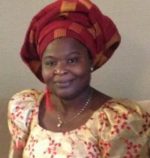Morphology Lecture Series XV
Borrowing is a common morphological process that involves taking words from one language to another.
Any language in contact will definitely have borrowed words.
These words are refered to as loanwords.
The essence of borrowing is to cope with new ideas and concepts that are unfamiliar to the receiving language.
Once languages come in contact, there will definitely be borrowed words as vestiges of the contact.
Words are also borrowed to replace expressions which have disappeared from the lexicon of the host language.
Borrowing enhances communicative competence of some speakers and also enriches the receiving language.
The words that are borrowed are however, made to conform to the phonological and morphological specification of the host language.
English has so many loan words in its lexicon among which are: anchor, cheese, kitchen, church, pepper, sickle, paper, martyr, tailor, piano, wine, etc. (Latin); advertise, calendar, rent, science, war, attorney, beef, pendant, person, garage, duke, etc. (French); atmosphere, parasite, skeleton, tragedy, climax, comedy, etc. (Greek); cockroach, adobe, mosquito, ranch, guitar, embargo, vigilante, etc. (Spanish); alcohol, algebra, almanac, algorithm, etc. (Arabic); tycoon judo, hara kiri, karaoke, tsunami, etc. (Japanese); zebra (Bantu); egg, sky, (Danish); etc.
Add your own.
Borrowing is broadly classified into direct borrowing and indirect borrowing.
1. Direct Borrowing
Direct borrowing, also called assimilator borrowing, is the type of borrowing where words are not subjected to major phonological or morphological modifications.
The borrowed words retain their original form and meaning; some however have little variation. English has many borrowed words from Latin, Greek and French.
For example bonus, alumnus, quorum, exit scientific, etc are borrowed from Latin; drama, comedy, scene, botany, physics, etc. are borrowed from Greek, while crown, jury, royal, charity, lechery, attorney, parliament, nation, etc. are words that came into English from French.
The data below show borrowed words into Yoruba from English and Hausa.
1.
SourceWordYoruba
English
table tébù ‘table’
peter pita ‘Peter’
motor mọ́tò ‘motor’
barber bábà ‘barber’
Hausa
súya súyà ‘barbeque’
aluabarka àlùbàríká ‘blessing’
The following data taken from Iloene (2010, p. 199-200) illustrate borrowed English, Hausa, Yoruba and Efik words in Igbo.
2.
Source Word Igbo Gloss
English
atom atom ‘atom’
limbo limbo ‘limbo’
Hausa
súyà súyà ‘roast meat’
wàyó wàyó ‘cheat, trick’
Yoruba
àkàrà àkàrà ‘bean nuggets’
ibà íbà ‘fever’
Efik
ekpo ekpo ‘child mask’
isam ịsam ‘periwinkle’
These loanwords exemplified above follow the phonology of the languages and so there is no need for any structural mofifications.
2. Indirect Borrowing
Indirect borrowing involves both phonological and morphological adaptation of the borrowed word to suit the target language.
The sounds could be modified, the tone could be modified and even the meaning could also be modified. For example:
3. Source Word Yoruba
English chair síà
doctor dọ́kítọ̀
yardley yádílè
class kílásì
slate síléètì
bread búrẹ́dì
break búrékì
frame férémù
crane kérénì
Hausa albasa àlùbàsà
laafia àlàáfíà
These words are borrowed into Yoruba from English and Hausa and they have been made to conform to the phonological rules of the language.
The data show the insertion of either vowel i or u breaking the consonant clusters and at the end of the word preventing a closed syllable from occurring in the language.
The examples in (4) below are instances of borrowing from English into Urhobo and Japanese.
4. Source Word Urhobo
English radio ìrédío
television ìtẹ̀nẹ̀víshònì
school ìsùkúrù
brother ìbrọ̀dá
5.
Source Word Japanese
English beer beeru
necktie nekutai
ice cream aisukurimu
baseball baisuboru
elevator elebeta
cocktail kakuteru
mansion manshon
In Urhobo, an extraneous vowel i is introduced at the beginning of the word because in the language, nouns always begin with a vowel.
This process is called prothesis. In the two languages, Urhobo and Japanese, the borrowed words conform to the phonology of the languages.
Exercises
1. With illustrations in at least two languages, discuss how words are formed.
2. What is borrowing?
3. Discuss the different types of borrowing, with ample data.
NB
a. In the next lecture, we will examine morphological typology.
b. For other lectures on word formation rules see Acronyms and Compounding.
b Excerpts are taken from Arokoyo (2017 and 2018).
References
Arokoyo, Bolanle Elizabeth. (2018). Owé Linguistics: an Introduction. Aba: NINLAN https://bit.ly/36uYAFw
Arokoyo, Bolanle Elizabeth. (2017). Unlocking Morphology. Ilorin: Chridamel Books.
Iloene, Modesta. (2010). Igbo Morphology. In Yusuf, Ore (ed.). Basic linguistics for Nigerian languages. Ijebu-Ode: Shebiotimo Publications. 188-201.

Wow 😘
Thanks for releasing such a comprehensive writeup ma.
Thank you. You can read other materials from the website.
You’ve given this concept a simple touch with the aid of practical data. This piece is very rich and empirical enough for illustration. I’d share a couple of your lecture series and this topic got so many reviews from our students in their WhatsApp study group. You are a mentor and a Prof in a making.
Thank you, glad you found it useful.
Very helpful. Thank you so much